Abstract
A total of 22,552 workers employed by the Atomic Weapons Establishment between 1951 and 1982 were followed up for an average of 18.6 years. Of the 3115 who died, 865 (28%) died of cancer. Mortality was 23% lower than the national average for all causes of death and 18% lower for cancer. These low rates were consistent with the findings in other workforces in the nuclear industry and reflect, at least in part, the selection of healthy people to work in the industry and the disproportionate recruitment of people from the higher social classes. At some time during their employment 9389 (42%) of the workers were monitored for exposure to radiation, the average cumulative whole body exposure to external radiation being 7.8 mSv. Their mortality was generally similar to that of other employees, even when exposures were lagged by 10 years. The rate ratio after a 10 year lag in workers with a radiation record compared with other workers was 1.01 (95% confidence interval 0.92 to 1.10) for all causes of death and 1.06 (0.89 to 1.27) for all malignant neoplasms. The only significant differences were for prostatic cancer (rate ratio 2.23; 95% confidence interval 1.13 to 4.40) and for cancers of ill defined and secondary sites (rate ratio 2.37; 1.23 to 4.56). Cancers of lymphatic and haemopoietic tissues were notable for their low occurrence in the study population, with only four deaths from leukaemia and two from multiple myeloma in workers with a radiation record, 9.16 and 3.55 deaths respectively being expected on the basis of national rates. Among workers who had a radiation record 3742 (40%) were also monitored for possible internal exposure to plutonium, 3044 (32%) to uranium, 1562 (17%) to tritium, 638 (7%) to polonium, and 281 (3%) to actinium. In these workers mortality from malignant neoplasms as a whole was not increased, but after a 10 year lag death rates from prostatic and renal cancers were generally more than twice the national average, these excesses arising in a small group of workers monitored for exposure to multiple radionuclides. Though mortality from lung cancer in workers monitored for exposure to plutonium was below the national average, it was some two thirds higher than in other radiation workers, the excess being of borderline statistical significance. Mortality from malignant neoplasms as a whole showed a weak and non-significant increasing trend with increasing level of cumulative whole body exposure to external radiation. When the exposures were lagged by 10 years the trend became stronger and significant, the estimated increase in relative risk per 10 mSv being 7.6% (95% confidence interval 0.4% to 15.3%). This trend was confined almost entirely to workers who were also monitored for exposure to radionuclides (p<0.001), the main contributions coming from lung cancer and prostatic cancer. Exposures of the lung and prostate from internal sources of radiation were not quantified, except for the contribution from tritium. It was therefore not possible to assess the extent to which the associations were due to internally deposited radionuclides rather than external exposure. The finding for prostatic cancer taken in conjunction with the results of other studies suggest a specific occupational hazard in a small group of workers in the nuclear industry who had comparatively high exposures to external radiation and who were also monitored for internal exposure to multiple radionuclides. Research is needed to discover whether any of the radionuclides and other substances concerned are concentrated in the prostate. The occurrence of lung cancer in this workforce requires further investigation taking into account smoking habits and tissue doses from inhaled radionuclides.
Full text
PDF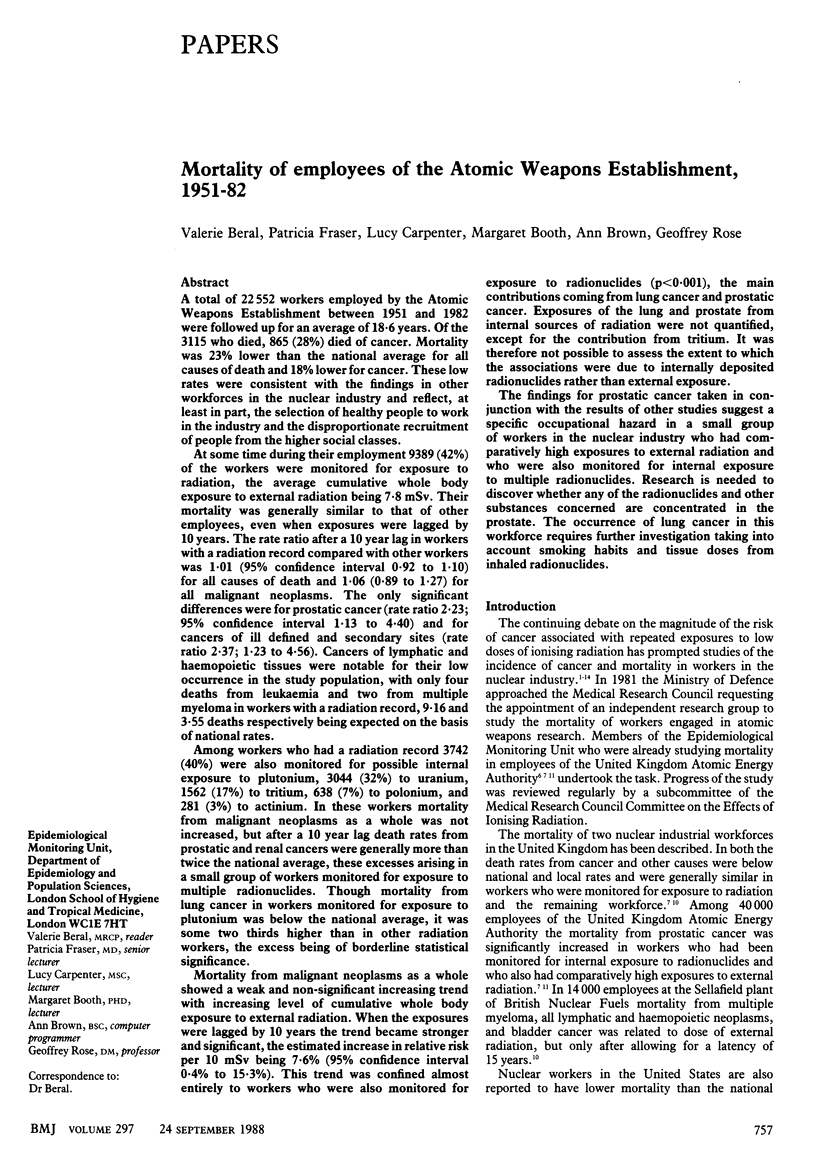
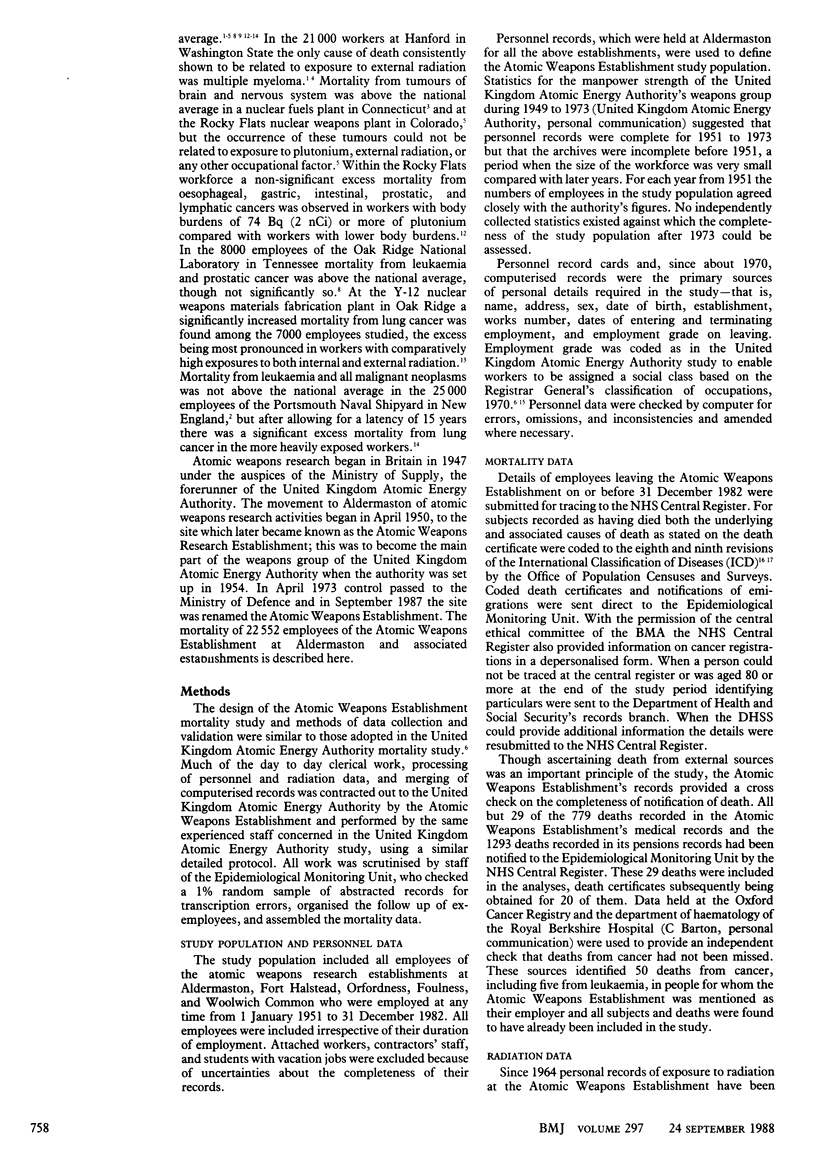
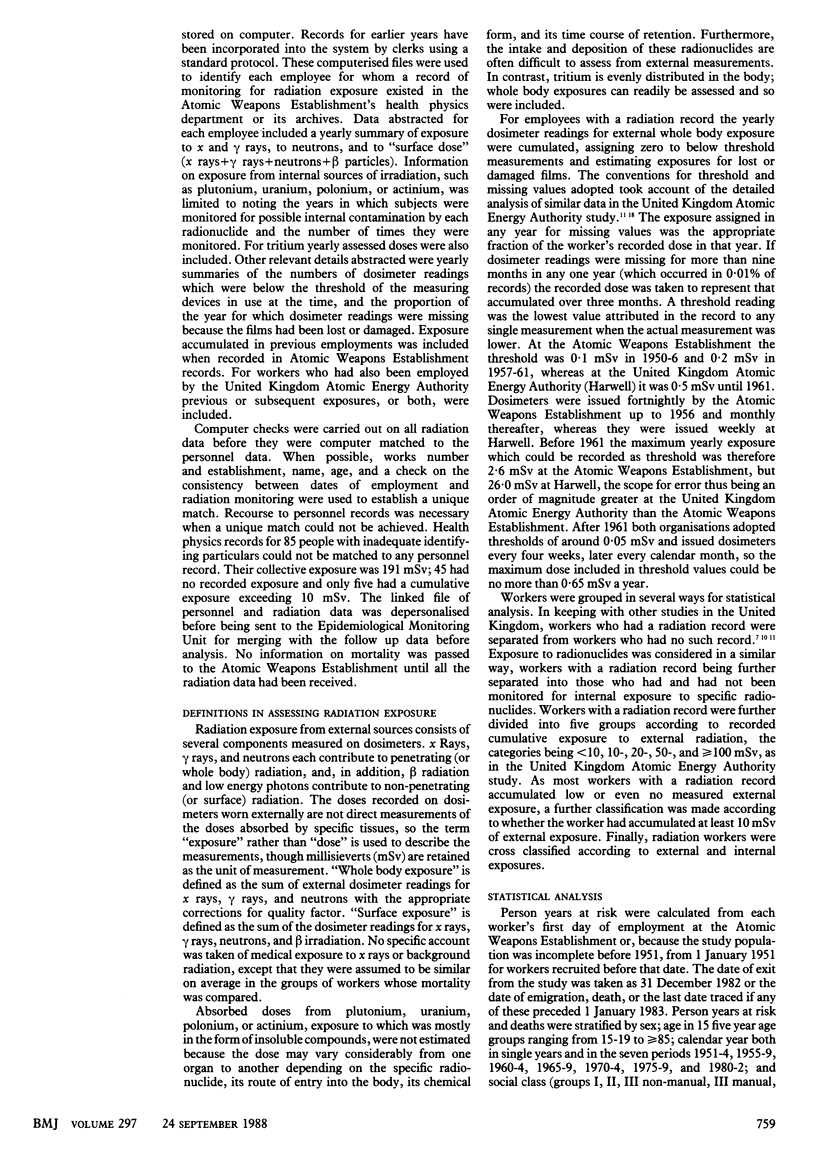
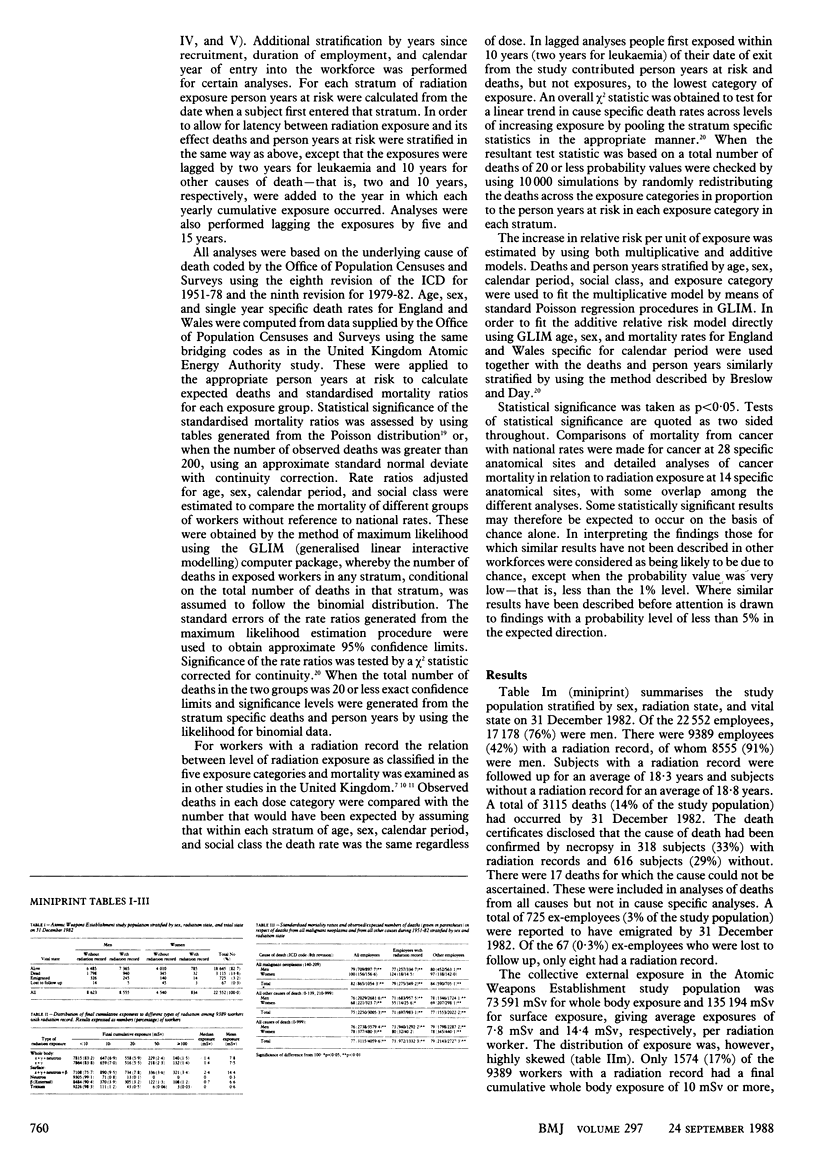
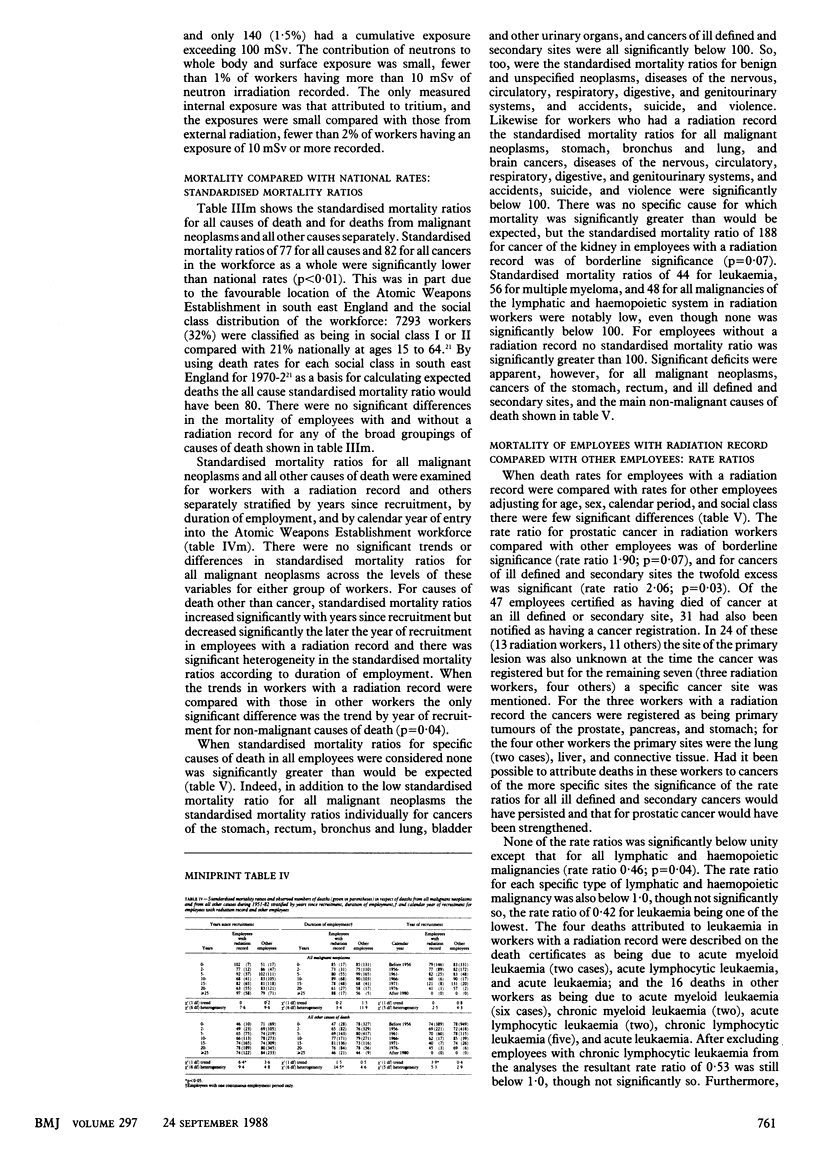
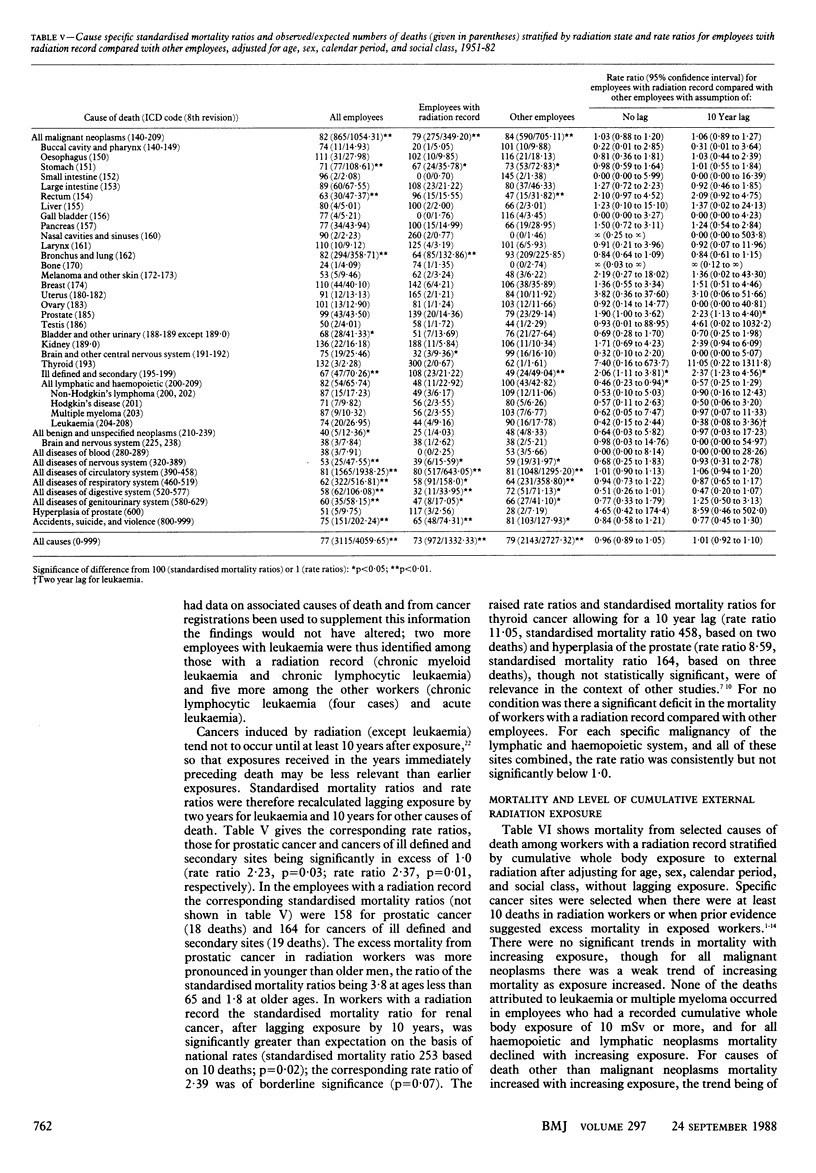
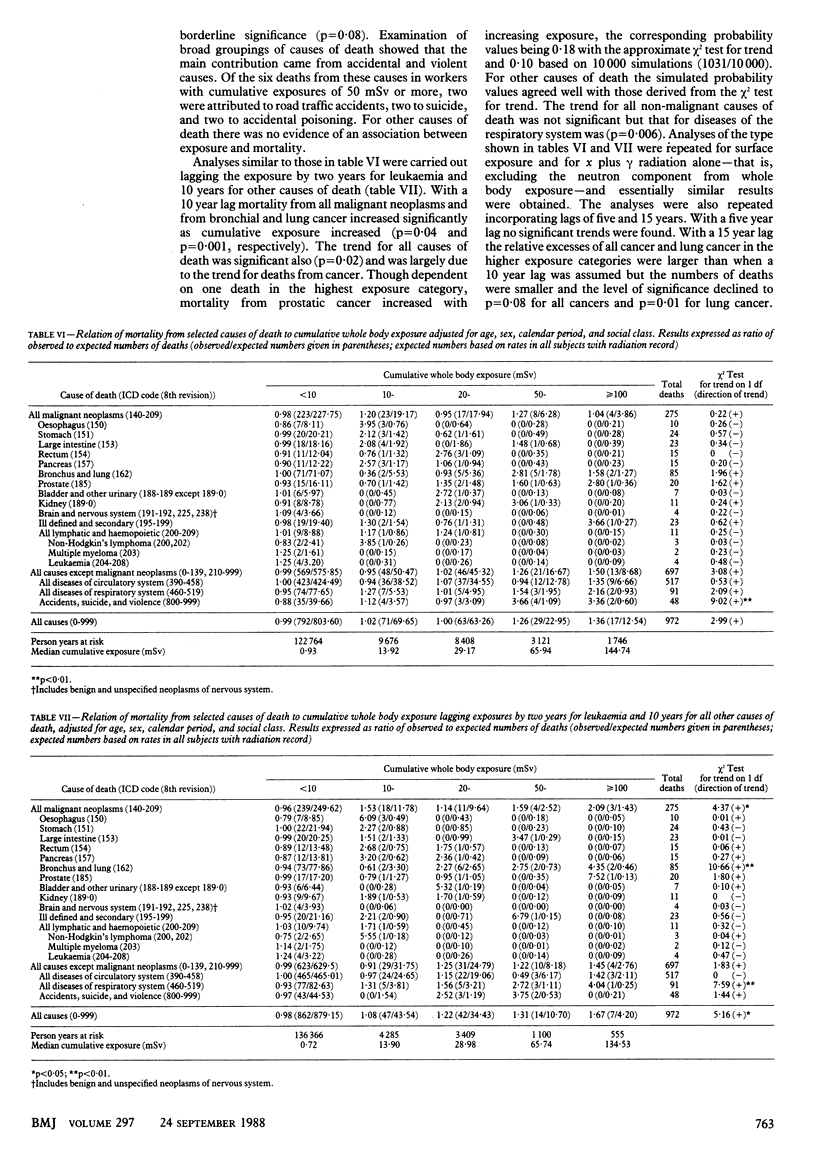
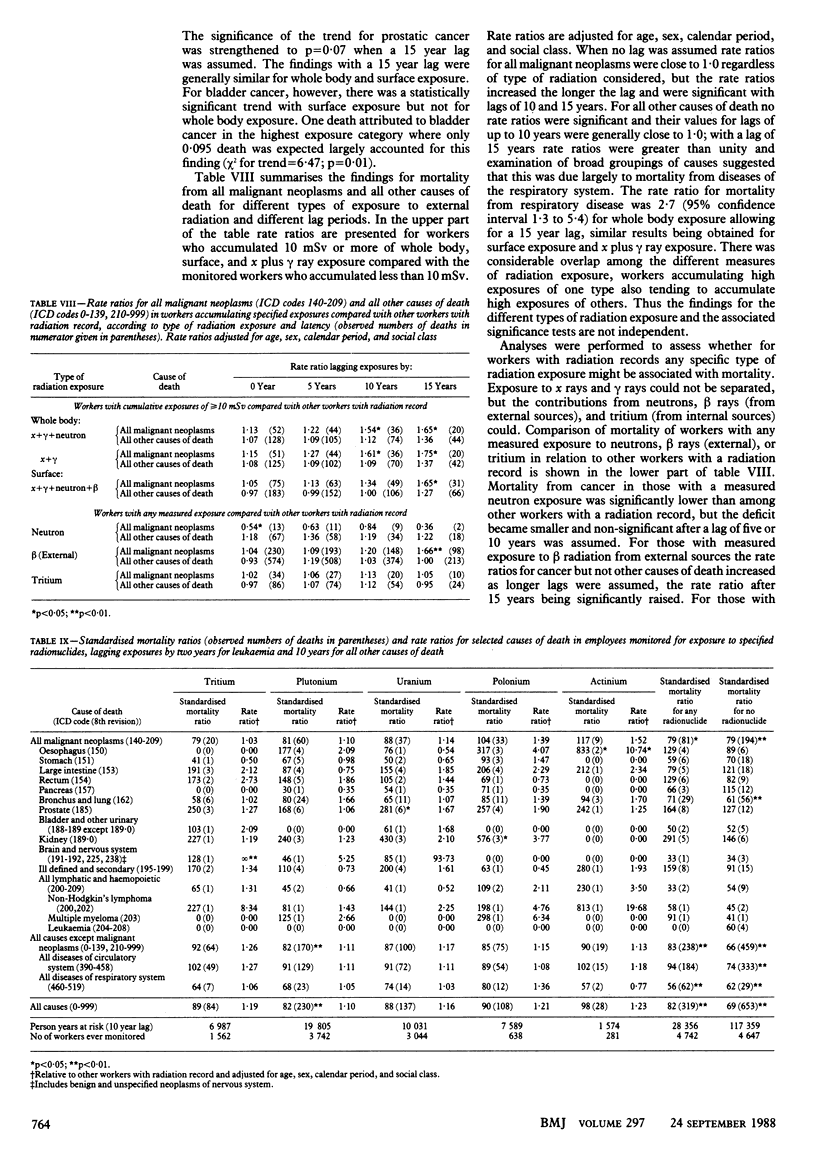
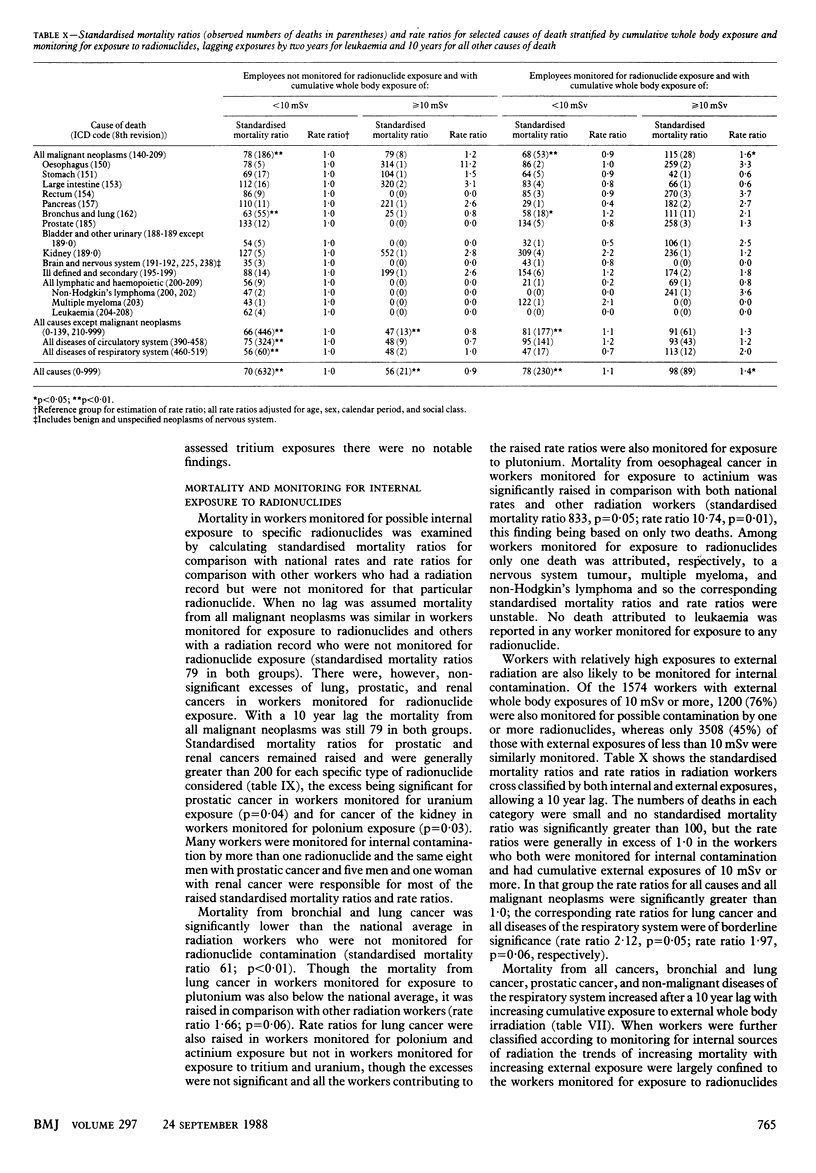
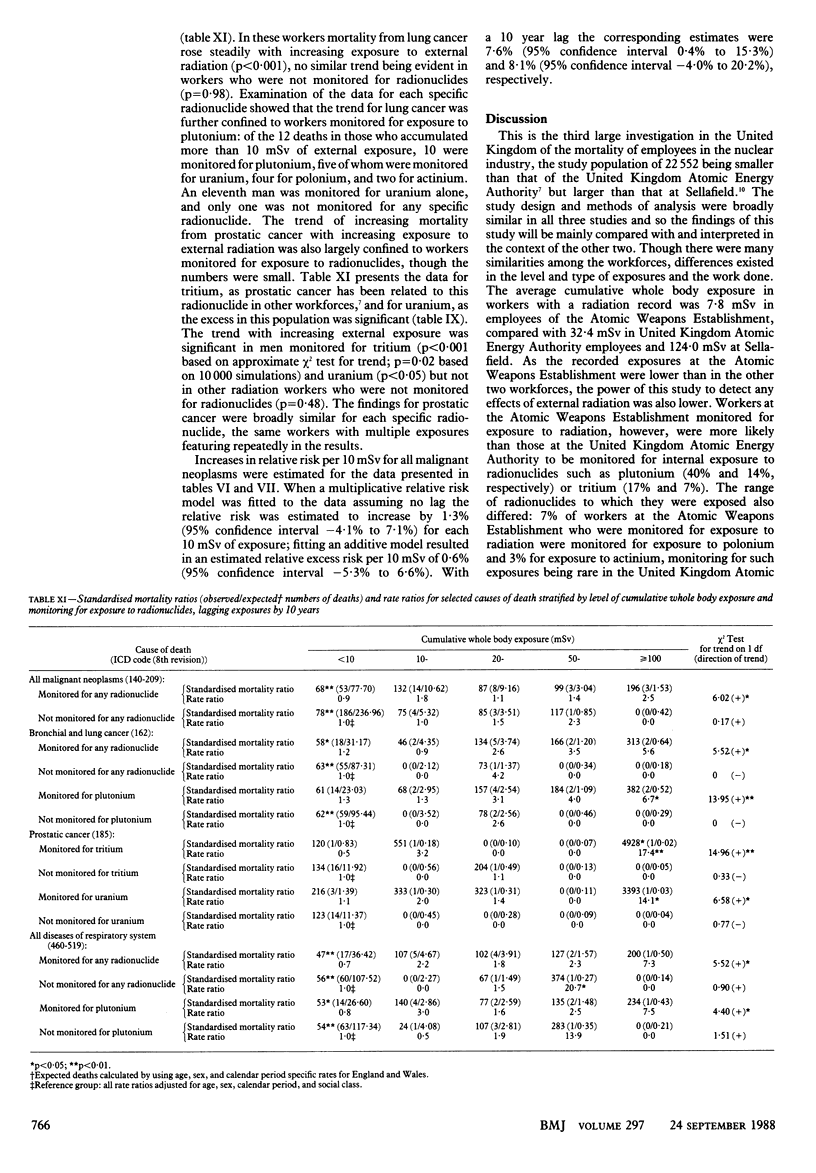
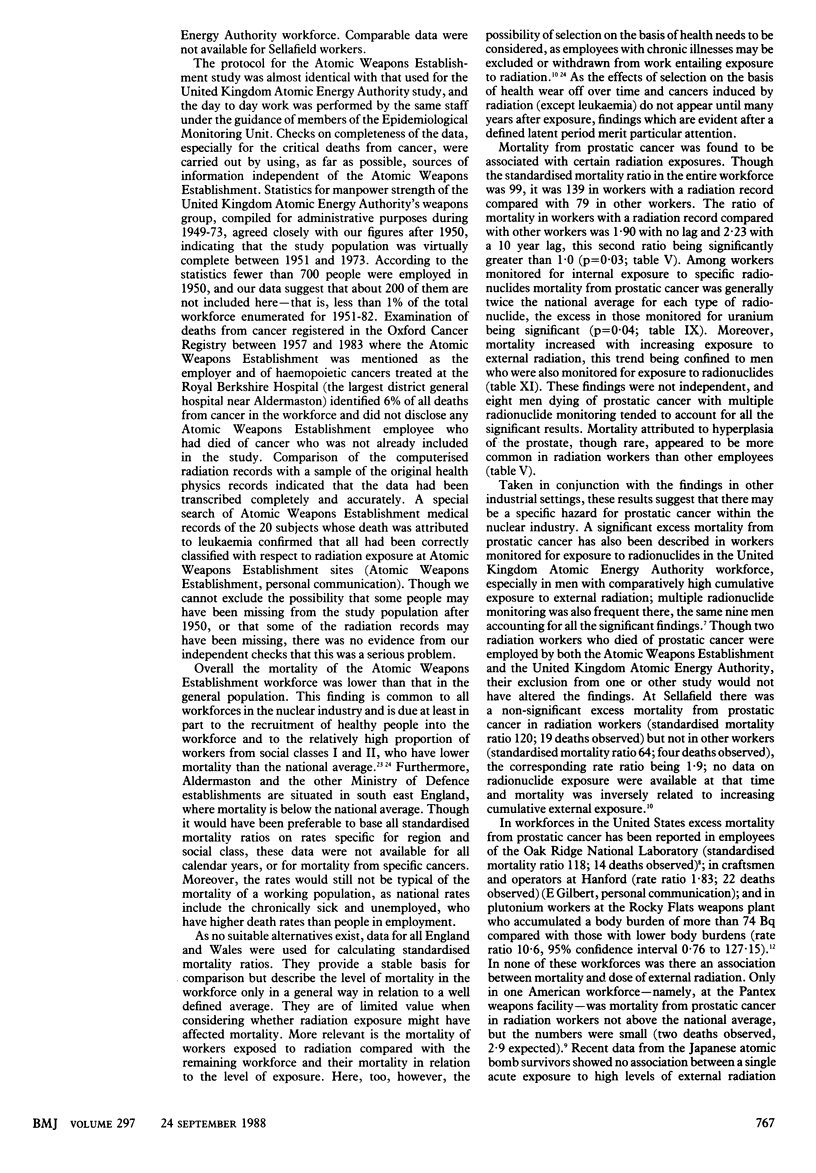

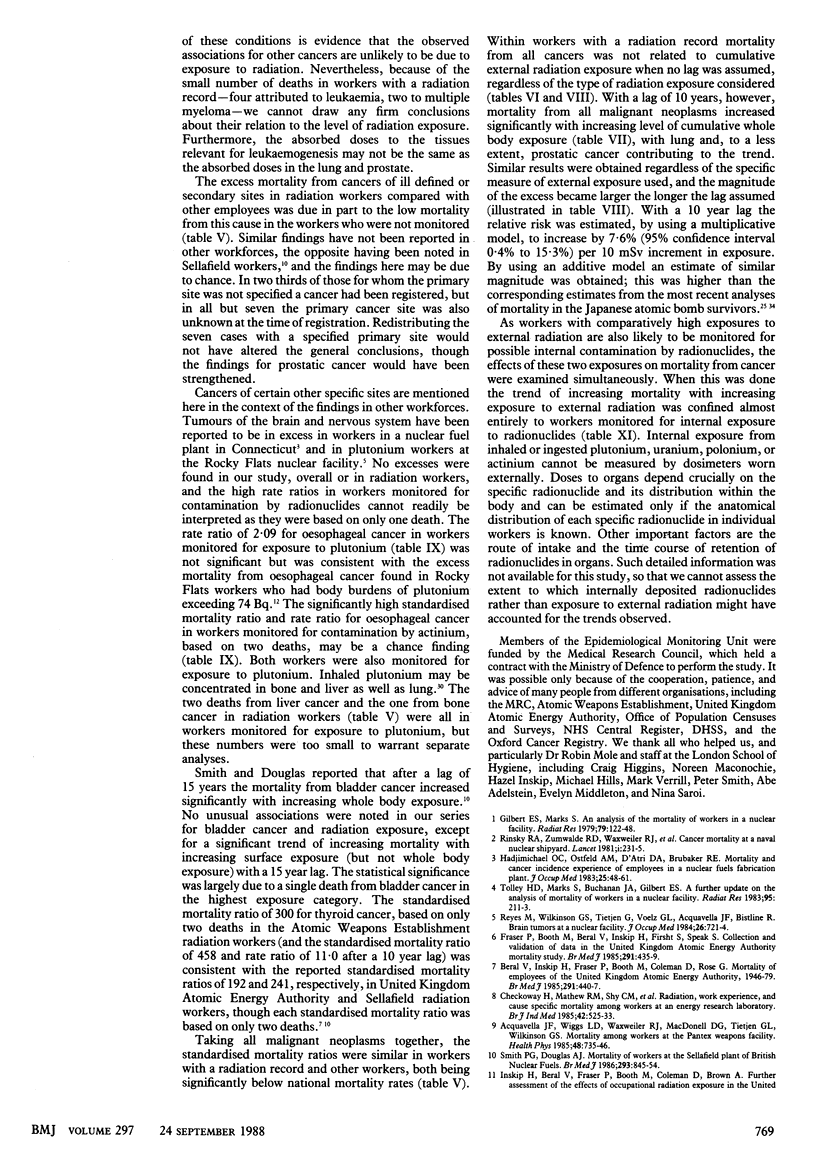
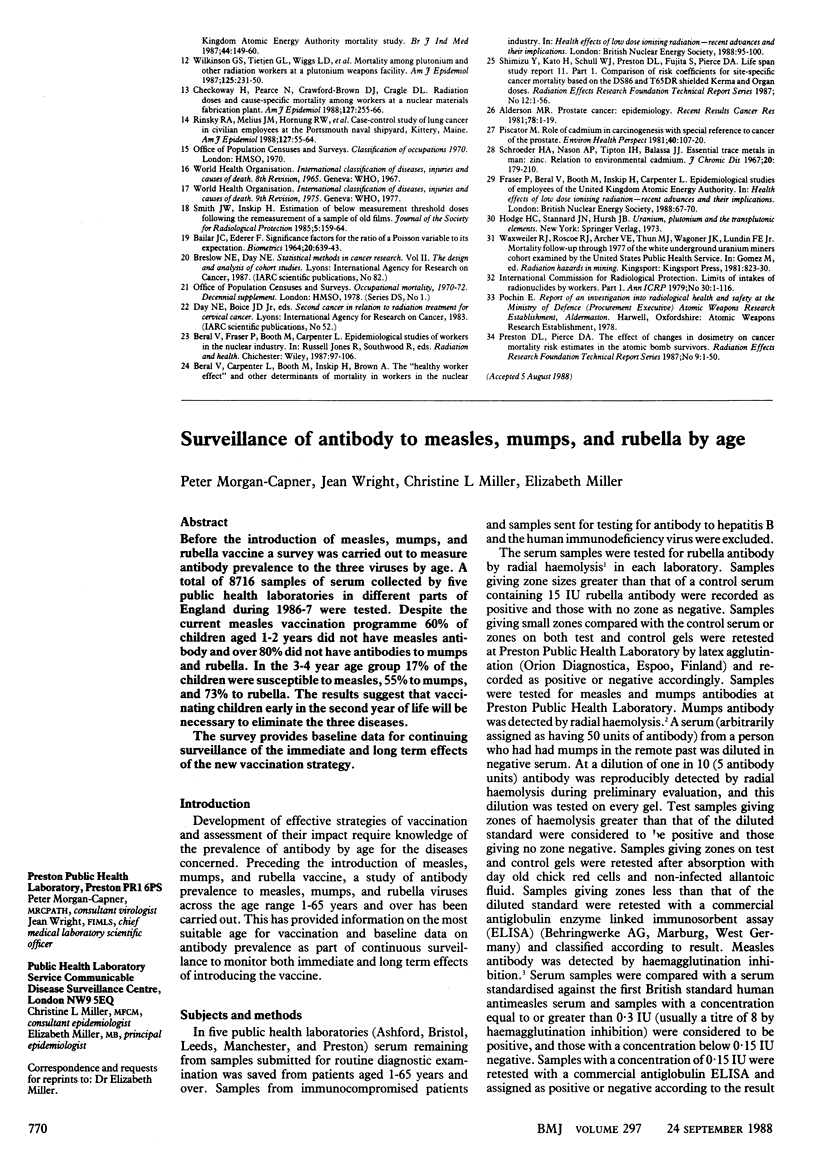
Selected References
These references are in PubMed. This may not be the complete list of references from this article.
- Acquavella J. F., Wiggs L. D., Waxweiler R. J., Macdonell D. G., Tietjen G. L., Wilkinson G. S. Mortality among workers at the Pantex weapons facility. Health Phys. 1985 Jun;48(6):735–746. doi: 10.1097/00004032-198506000-00002. [DOI] [PubMed] [Google Scholar]
- Beral V., Inskip H., Fraser P., Booth M., Coleman D., Rose G. Mortality of employees of the United Kingdom Atomic Energy Authority, 1946-1979. Br Med J (Clin Res Ed) 1985 Aug 17;291(6493):440–447. doi: 10.1136/bmj.291.6493.440. [DOI] [PMC free article] [PubMed] [Google Scholar]
- Checkoway H., Pearce N., Crawford-Brown D. J., Cragle D. L. Radiation doses and cause-specific mortality among workers at a nuclear materials fabrication plant. Am J Epidemiol. 1988 Feb;127(2):255–266. doi: 10.1093/oxfordjournals.aje.a114801. [DOI] [PubMed] [Google Scholar]
- Fraser P., Booth M., Beral V., Inskip H., Firsht S., Speak S. Collection and validation of data in the United Kingdom Atomic Energy Authority mortality study. Br Med J (Clin Res Ed) 1985 Aug 17;291(6493):435–439. doi: 10.1136/bmj.291.6493.435. [DOI] [PMC free article] [PubMed] [Google Scholar]
- Gilbert E. S., Marks S. An analysis of the mortality of workers in a nuclear facility. Radiat Res. 1979 Jul;79(1):122–148. [PubMed] [Google Scholar]
- Hadjimichael O. C., Ostfeld A. M., D'Atri D. A., Brubaker R. E. Mortality and cancer incidence experience of employees in a nuclear fuels fabrication plant. J Occup Med. 1983 Jan;25(1):48–61. doi: 10.1097/00043764-198301000-00015. [DOI] [PubMed] [Google Scholar]
- Piscator M. Role of cadmium in carcinogenesis with special reference to cancer of the prostate. Environ Health Perspect. 1981 Aug;40:107–120. doi: 10.1289/ehp.8140107. [DOI] [PMC free article] [PubMed] [Google Scholar]
- Reyes M., Wilkinson G. S., Tietjen G., Voelz G. L., Acquavella J. F., Bistline R. Brain tumors at a nuclear facility. J Occup Med. 1984 Oct;26(10):721–724. doi: 10.1097/00043764-198410000-00009. [DOI] [PubMed] [Google Scholar]
- Rinsky R. A., Melius J. M., Hornung R. W., Zumwalde R. D., Waxweiler R. J., Landrigan P. J., Bierbaum P. J., Murray W. E., Jr Case-control study of lung cancer in civilian employees at the Portsmouth Naval Shipyard, Kittery, Maine. Am J Epidemiol. 1988 Jan;127(1):55–64. doi: 10.1093/oxfordjournals.aje.a114791. [DOI] [PubMed] [Google Scholar]
- Rinsky R. A., Zumwalde R. D., Waxweiler R. J., Murray W. E., Jr, Bierbaum P. J., Landrigan P. J., Terpilak M., Cox C. Cancer mortality at a Naval Nuclear Shipyard. Lancet. 1981 Jan 31;1(8214):231–235. doi: 10.1016/s0140-6736(81)92083-3. [DOI] [PubMed] [Google Scholar]
- Schroeder H. A., Nason A. P., Tipton I. H., Balassa J. J. Essential trace metals in man: zinc. Relation to environmental cadmium. J Chronic Dis. 1967 Apr;20(4):179–210. doi: 10.1016/0021-9681(67)90002-1. [DOI] [PubMed] [Google Scholar]
- Smith P. G., Douglas A. J. Mortality of workers at the Sellafield plant of British Nuclear Fuels. Br Med J (Clin Res Ed) 1986 Oct 4;293(6551):845–854. doi: 10.1136/bmj.293.6551.845. [DOI] [PMC free article] [PubMed] [Google Scholar]
- Tolley H. D., Marks S., Buchanan J. A., Gilbert E. S. A further update of the analysis of mortality of workers in a nuclear facility. Radiat Res. 1983 Jul;95(1):211–213. [PubMed] [Google Scholar]
- Wilkinson G. S., Tietjen G. L., Wiggs L. D., Galke W. A., Acquavella J. F., Reyes M., Voelz G. L., Waxweiler R. J. Mortality among plutonium and other radiation workers at a plutonium weapons facility. Am J Epidemiol. 1987 Feb;125(2):231–250. doi: 10.1093/oxfordjournals.aje.a114523. [DOI] [PubMed] [Google Scholar]


